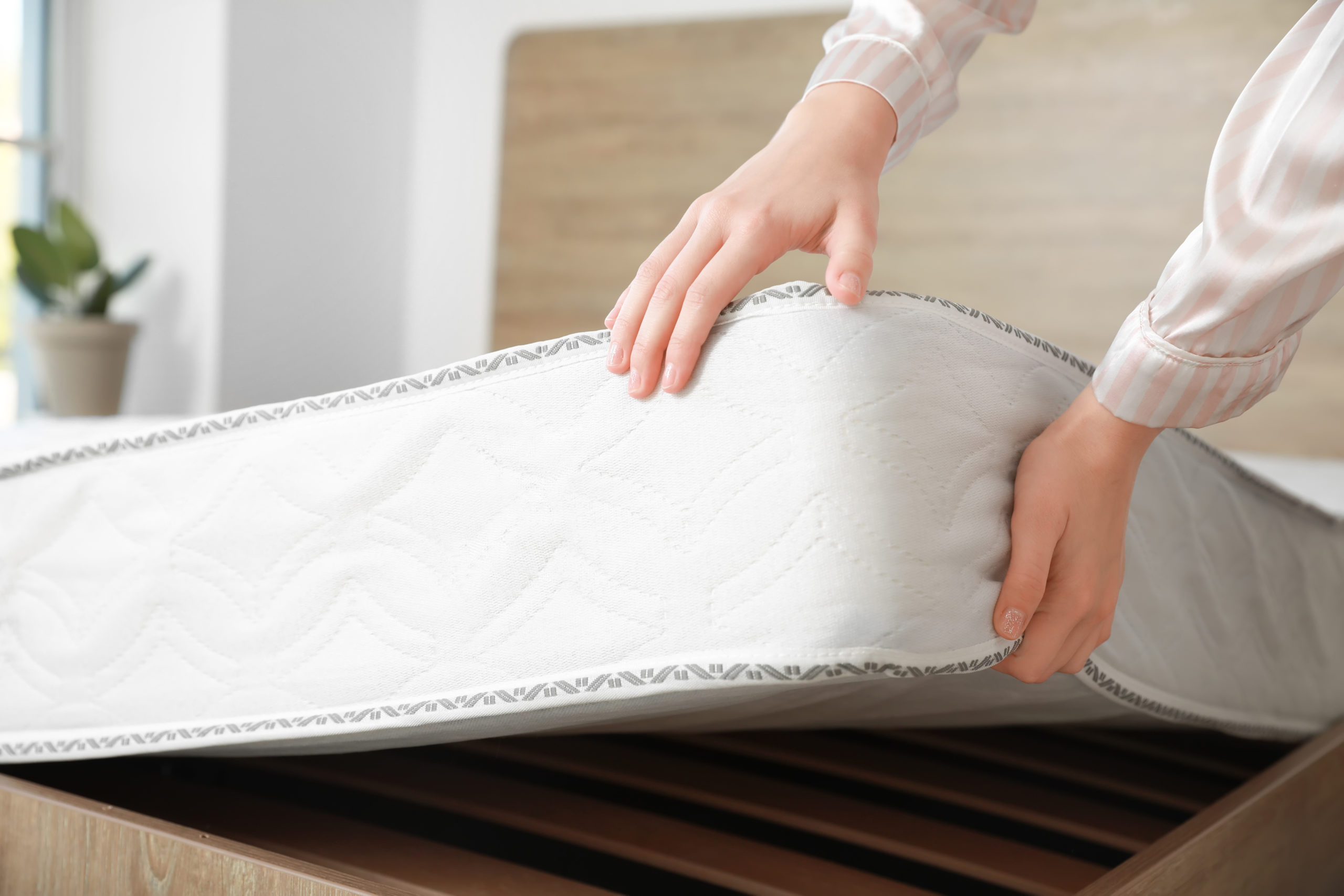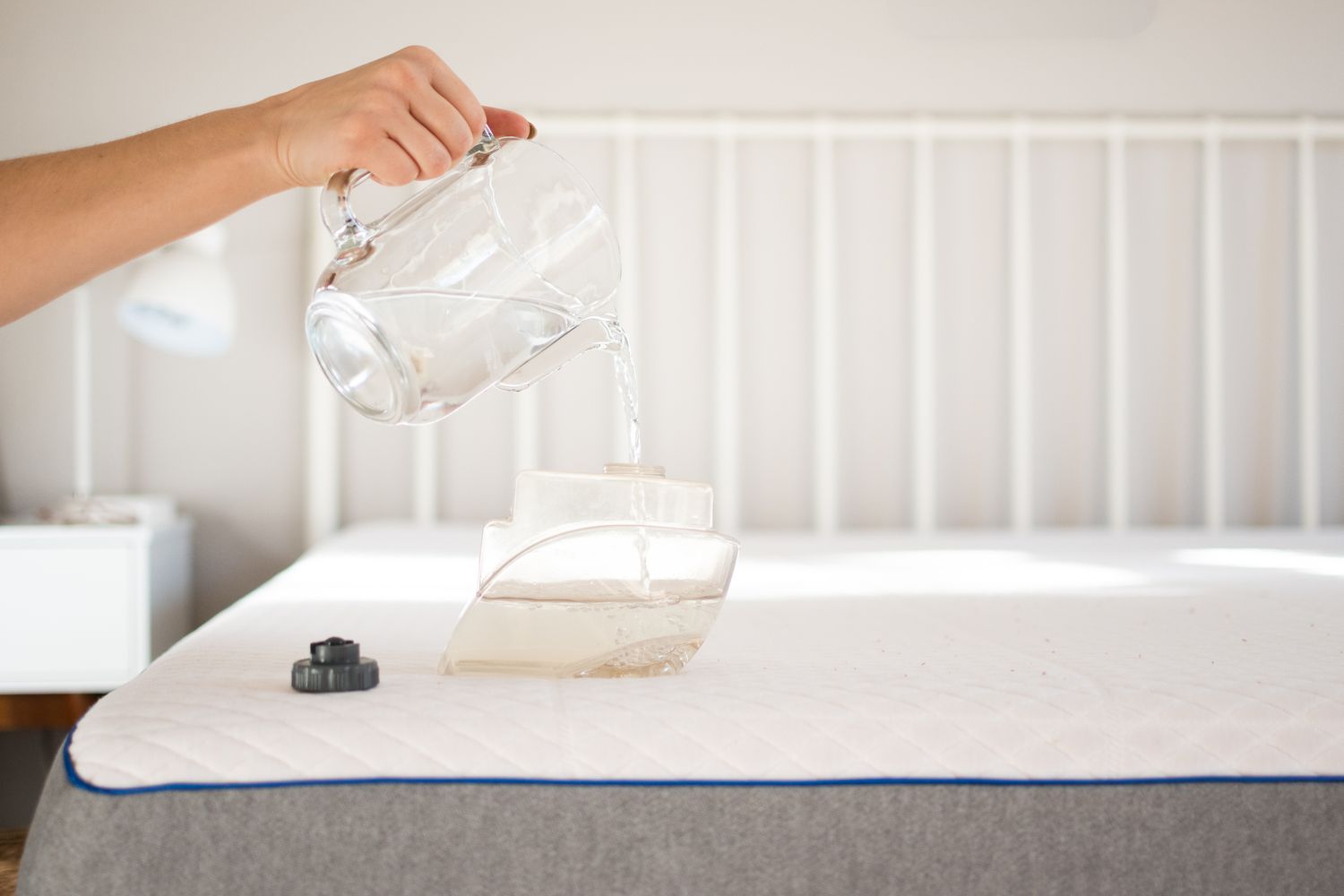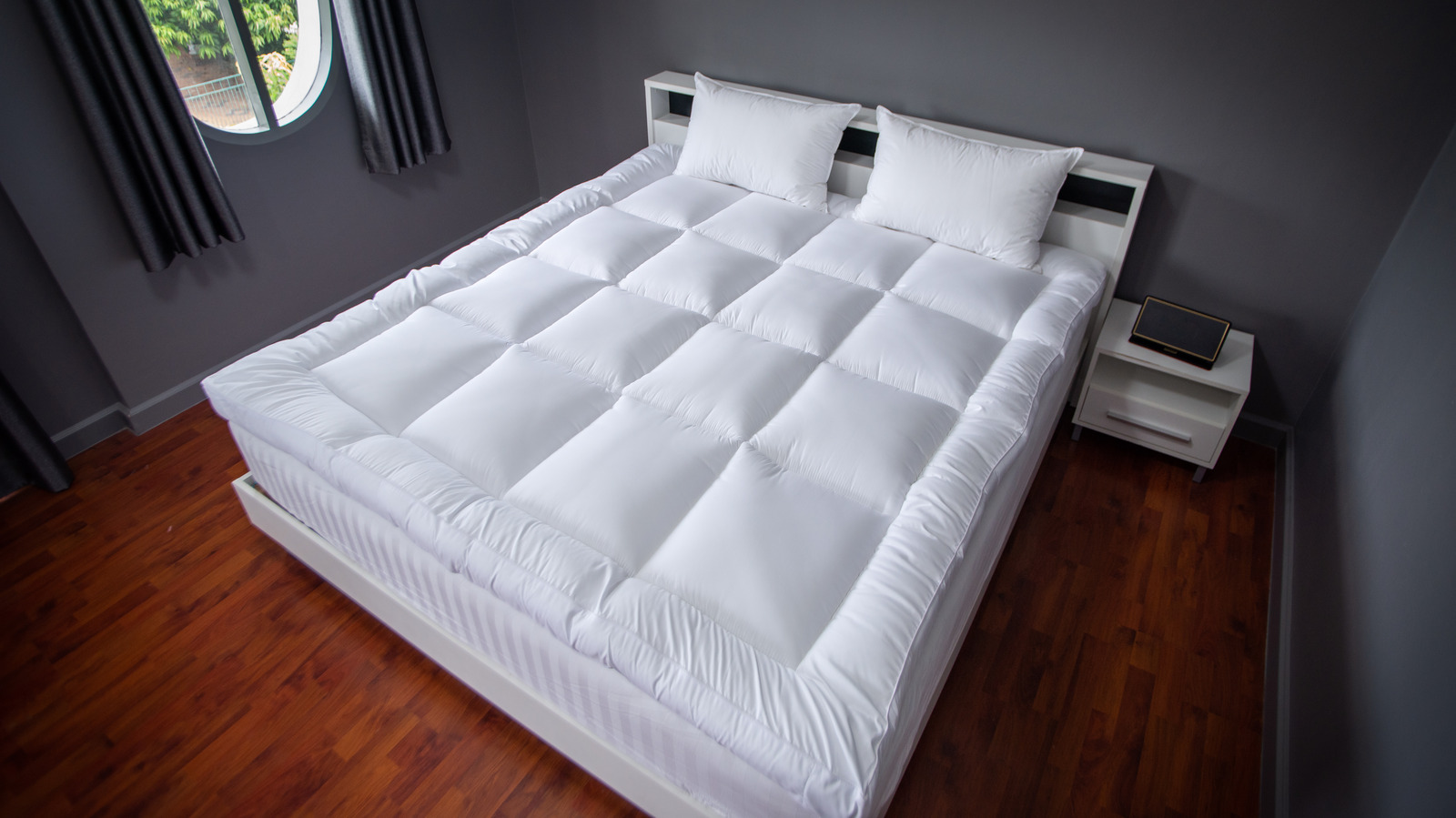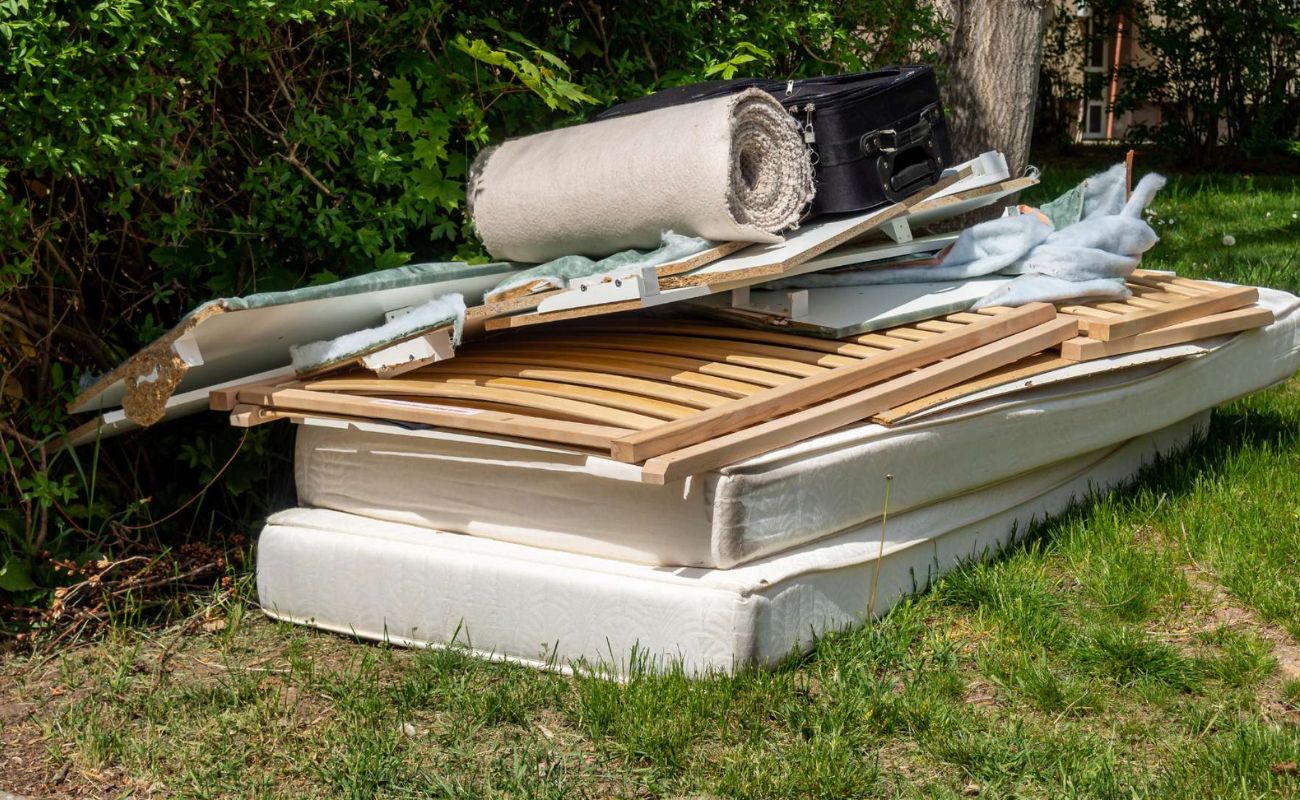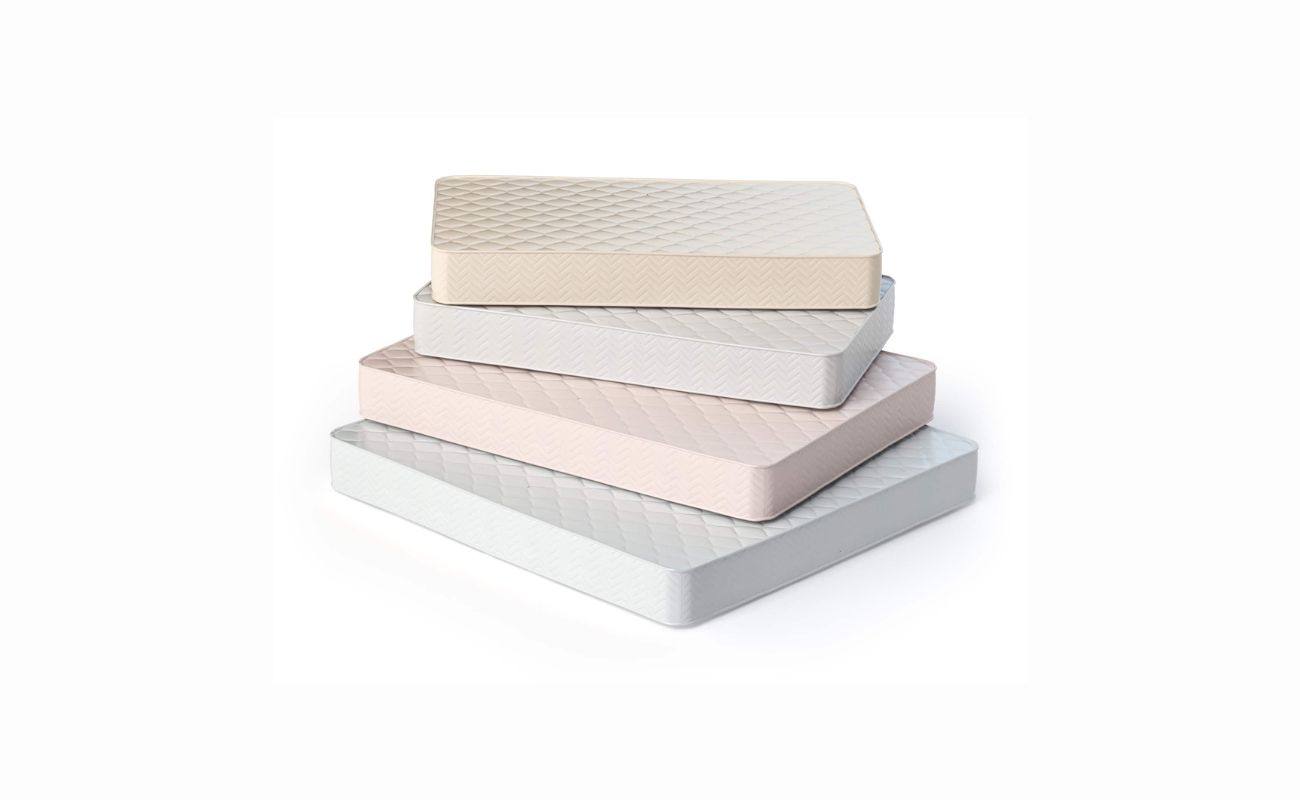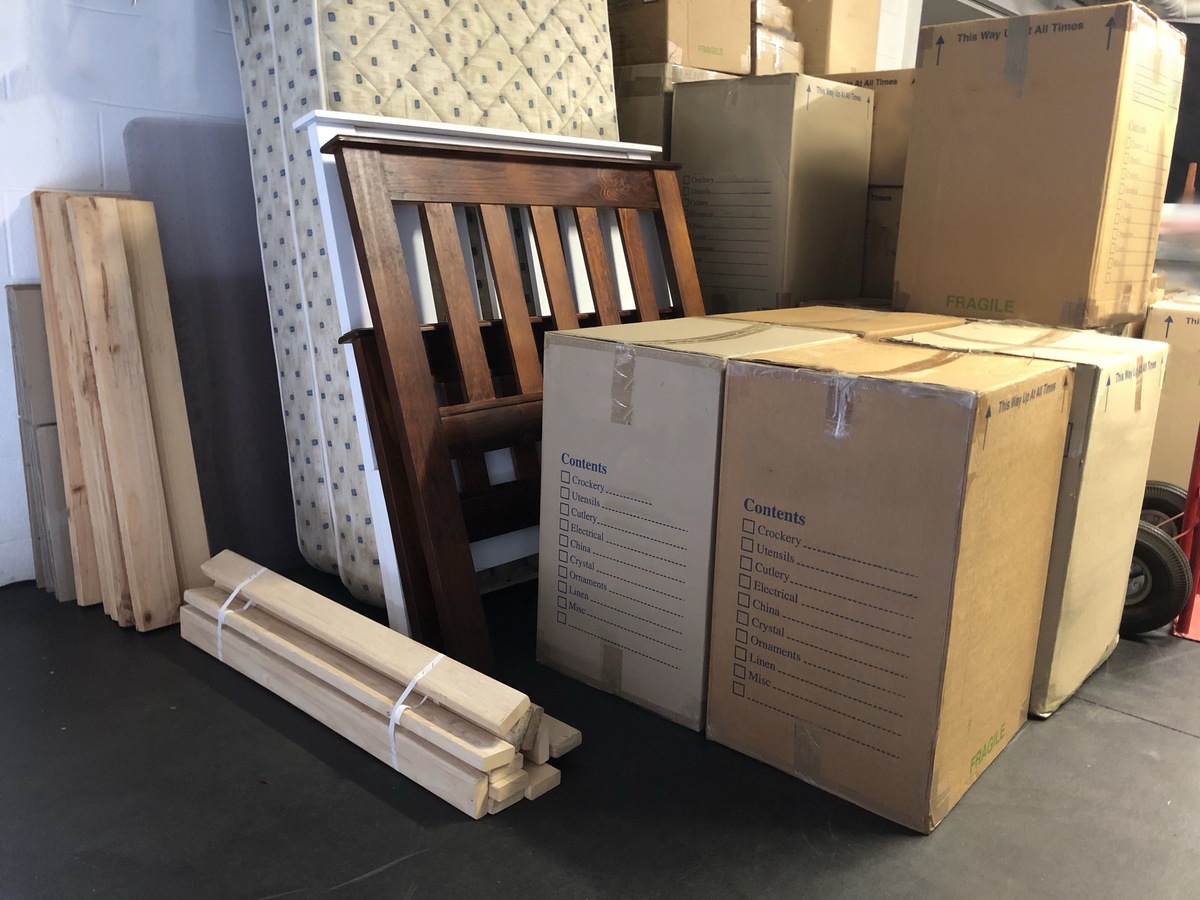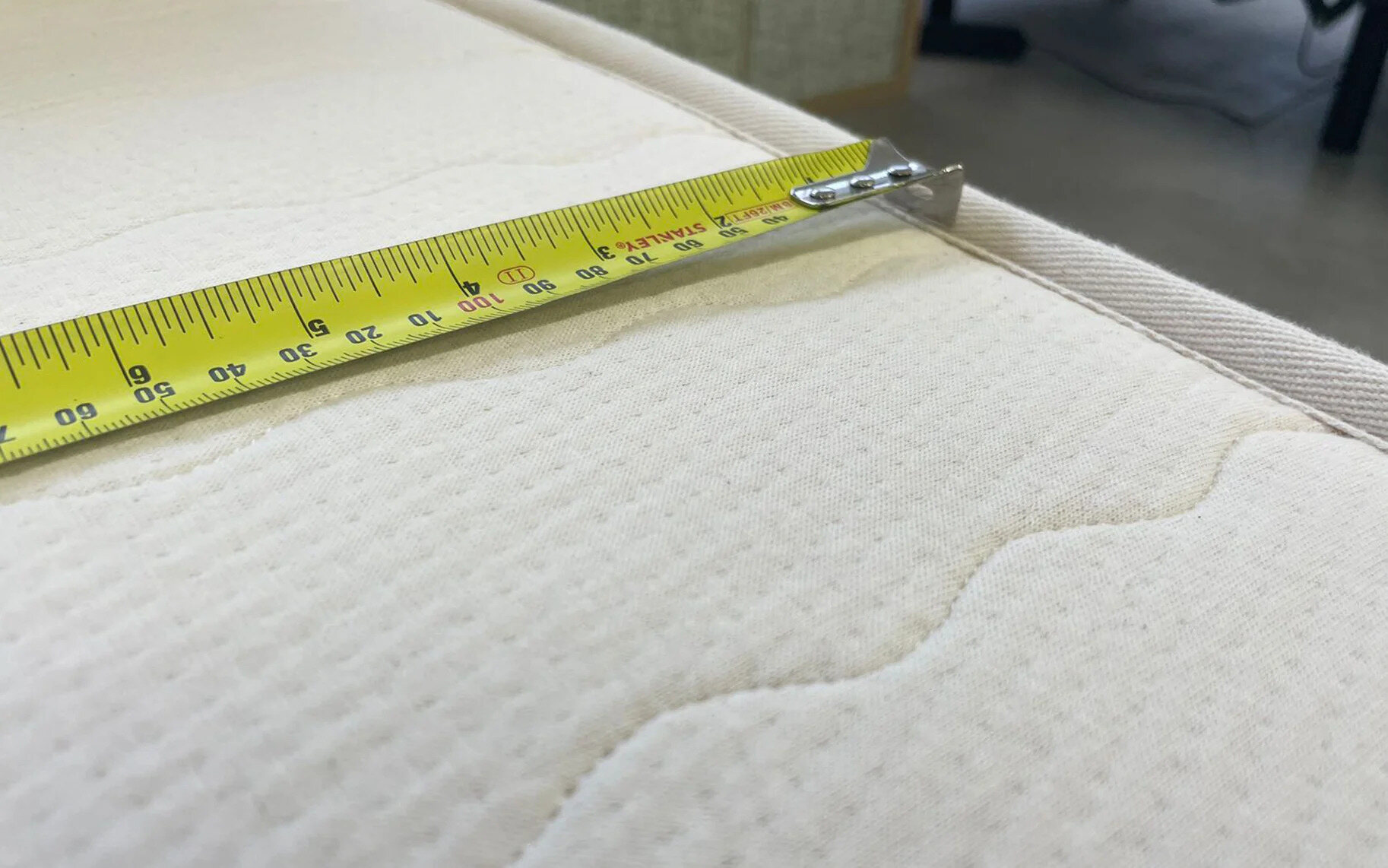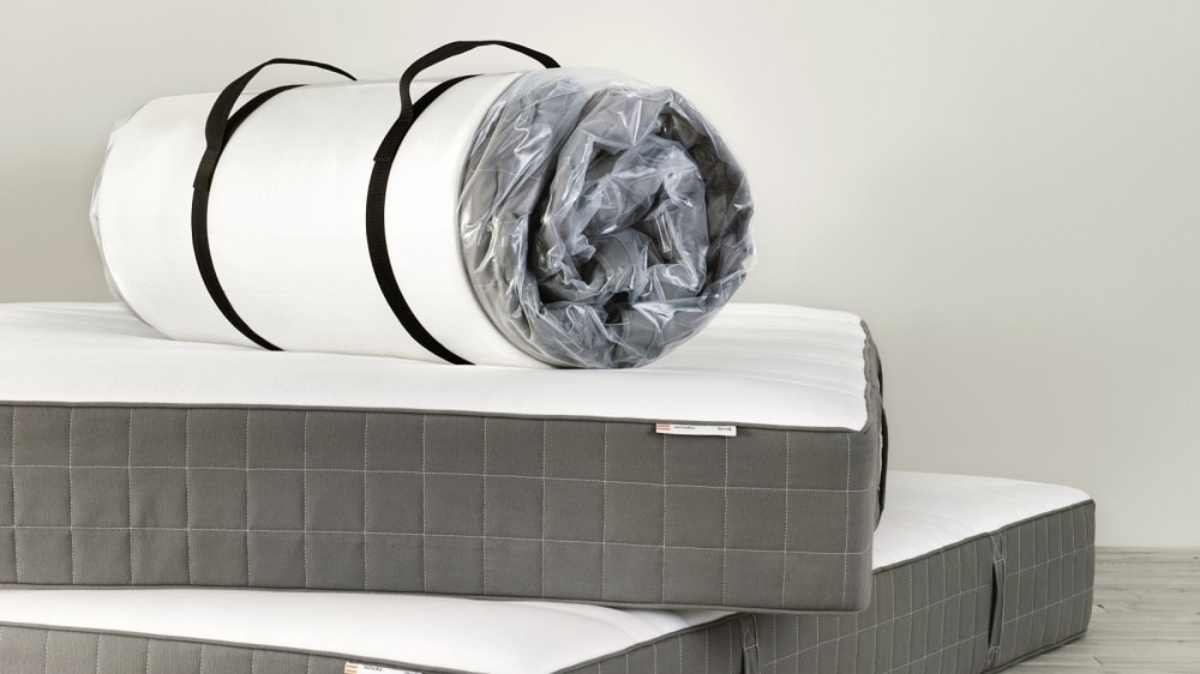Home>Furniture>Bedroom Furniture>How To Transport A Mattress
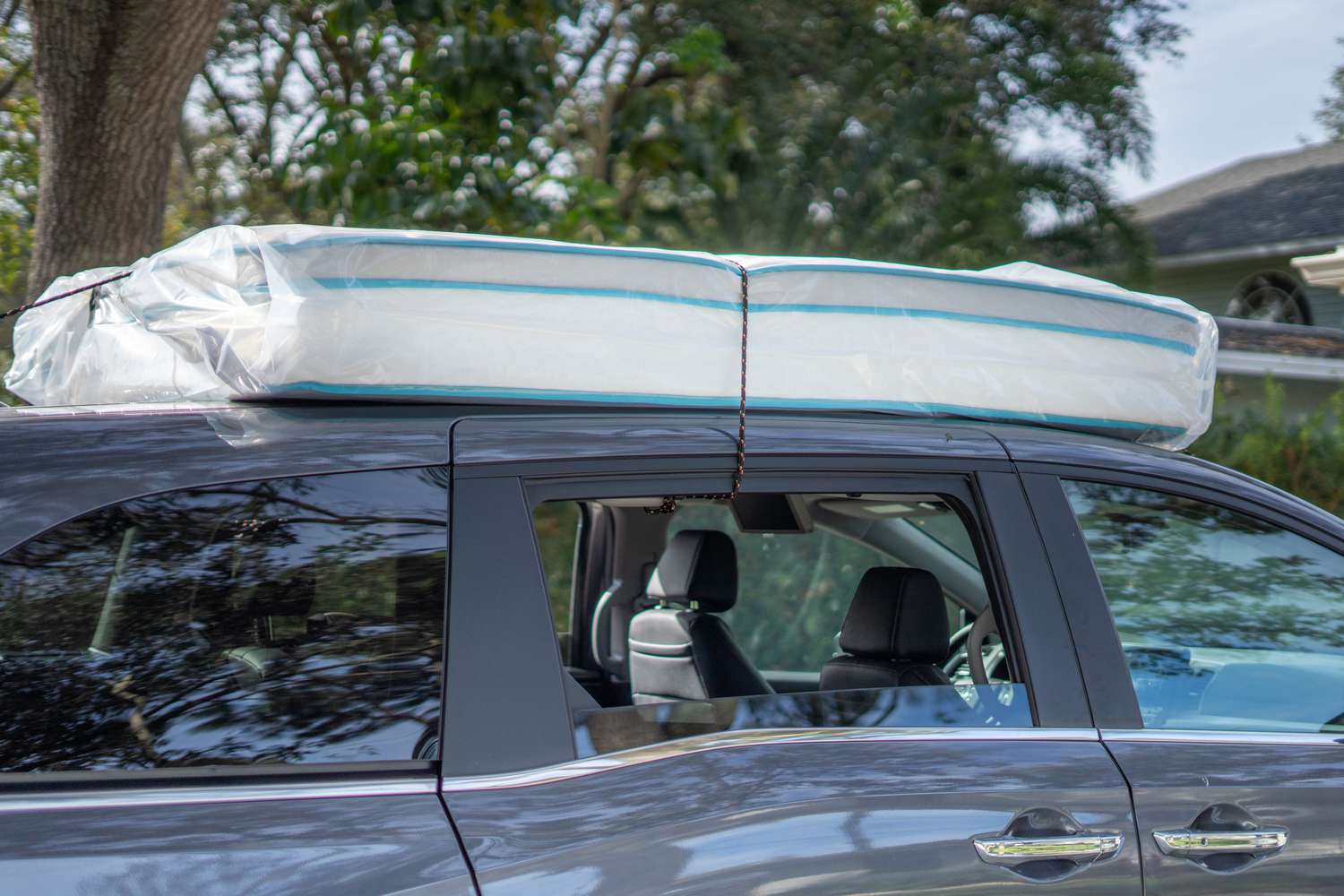

Bedroom Furniture
How To Transport A Mattress
Modified: January 5, 2024
Learn how to properly transport a mattress with these helpful tips and tricks. Safely move your bedroom furniture without any hassle and stress.
(Many of the links in this article redirect to a specific reviewed product. Your purchase of these products through affiliate links helps to generate commission for Storables.com, at no extra cost. Learn more)
Introduction
Transporting a mattress can be a daunting task, especially if you’re not sure how to do it properly. Whether you’re moving to a new home or simply need to transport your mattress for another reason, it’s important to take the necessary steps to ensure its safety and protect it from damage. In this article, we’ll guide you through the process of transporting a mattress, providing you with valuable tips and insights along the way.
Proper preparation is key when it comes to transporting a mattress. You need to consider factors such as removing bedding and accessories, measuring the mattress and the available space, choosing the right vehicle, and protecting the mattress from dirt and damage. Additionally, you’ll need to ensure that the mattress is securely fastened during transit to prevent any accidents or damage.
Transporting a mattress requires careful planning and attention to detail, but with the right knowledge and preparation, you can make the process much easier and stress-free. So, let’s dive into the step-by-step guide that will help you transport your mattress safely and efficiently.
Key Takeaways:
- Proper preparation, including clearing the path, gathering tools, and assessing the mattress condition, is crucial for successful mattress transportation.
- Choosing the right vehicle, securing the mattress with straps, and using proper loading techniques are essential for safe and efficient mattress transportation.
Read more: How Is A Mattress Made
Preparing for Transportation
Before you begin transporting your mattress, it’s important to make the necessary preparations to ensure a smooth and successful journey. Here are some steps you can take to get ready:
- Clear the path: Remove any obstacles or furniture that may obstruct the path when moving the mattress. This will make it easier to maneuver and reduce the risk of accidents or damage.
- Gather the necessary tools: Depending on the type of mattress and the transportation method, you may need certain tools such as straps, bungee cords, or a tape measure. Make sure you have everything you need before you start.
- Assess the condition of the mattress: Before transporting your mattress, inspect it for any existing damages. Take note of any tear, stain, or vulnerability that may worsen during the transportation process.
- Consider professional help: If you’re unable to transport the mattress on your own, don’t hesitate to hire professional movers. They have the expertise and equipment to handle the job efficiently and minimize the risk of damage.
By taking these preparatory steps, you can ensure a solid foundation for a successful mattress transportation process. Now that you’re ready to move your mattress, the next step is to remove bedding and accessories.
Removing Bedding and Accessories
Before you can transport your mattress, you need to properly prepare it by removing all bedding and accessories. This will not only make the mattress lighter and easier to handle, but it will also help protect it from potential damage during transportation. Here are some steps to follow:
- Strip the bed: Start by removing all sheets, blankets, and pillowcases from the mattress. Be sure to also remove any mattress covers or protectors that may be in place.
- Pack bedding separately: Once the bedding is removed, pack it separately in sturdy bags or boxes. This will keep it clean and prevent any potential tangles or snags during transport.
- Remove pillows and cushions: Take off any pillows, cushions, or other accessories that may be on top of the mattress. These items can be transported separately or packed together with the bedding.
- Secure loose parts: If your mattress has any detachable components, such as headboards or footboards, make sure they are properly secured or removed before transportation.
By completely removing the bedding and accessories from your mattress, you not only make it easier to handle during transport, but you also ensure that these items remain clean and undamaged. Once you have removed everything, it’s time to measure your mattress and the available space to ensure a proper fit.
Measuring the Mattress and Space
Before loading your mattress for transportation, it’s crucial to measure both the mattress and the space in which it will be placed. This step is vital to ensure a proper fit and to prevent any potential damage to the mattress or your surroundings. Here’s what you need to do:
- Measure the mattress: Using a tape measure, measure the length, width, and height of your mattress. Take note of these measurements as they will help you determine the appropriate vehicle and packing materials for transportation.
- Measure the available space: Next, measure the dimensions of the space where the mattress will be placed in your vehicle or moving truck. This includes the length, width, and height of the area. Ensure that there is enough space to accommodate the mattress without it being squeezed or experiencing any unnecessary pressure.
- Consider doorways and staircases: If you have to navigate doorways or staircases during the transportation process, measure their dimensions as well. This will help you determine if the mattress can fit through these narrow passages without any issues.
- Account for additional equipment: Additionally, take into account any packaging materials or tools that will be used to secure the mattress. These may add extra width or height to the overall dimensions, so be sure to factor them in when measuring the space.
By measuring both the mattress and the available space, you can ensure a proper fit and avoid any potential damage or inconvenience during transportation. Once you have these measurements, you can move on to choosing the right vehicle for transporting your mattress.
Choosing the Right Vehicle
When it comes to transporting a mattress, choosing the right vehicle is crucial to ensure a safe and efficient journey. The vehicle you select should have sufficient space, proper handling capabilities, and proper security measures. Here are some factors to consider when choosing the right vehicle:
- Size of the mattress: Consider the size of your mattress and whether it will fit comfortably in the vehicle. Measure the dimensions of the mattress and compare them to the dimensions of the vehicle’s cargo space to ensure a proper fit.
- Type of vehicle: Depending on the size of your mattress and your transportation needs, you may opt for a variety of vehicles, such as a pickup truck, a van, or a moving truck. Choose a vehicle that provides sufficient space while also being easy to load and unload.
- Security features: Look for a vehicle with tie-down points or straps that will allow you to secure the mattress and prevent it from shifting during transportation. This will help keep your mattress safe and prevent any damage.
- Protection from the elements: If you are transporting your mattress in an open truck or trailer, consider using a waterproof cover or tarp to protect it from rain, dust, and other elements. This will help keep your mattress clean and dry throughout the journey.
- Accessibility: Ensure that the vehicle you choose provides easy access for loading and unloading the mattress. This may involve selecting a vehicle with a low loading height or a rear liftgate for convenience and safety.
By carefully considering these factors, you can choose the right vehicle that meets your needs and ensures a secure and successful transportation process for your mattress. Once you have the appropriate vehicle secured, it’s time to move on to preparing the mattress for transportation.
When transporting a mattress, use a mattress bag to protect it from dirt and damage. This will also make it easier to carry and maneuver through doorways and hallways.
Read more: How To Build A Mattress
Cleaning and Protecting the Mattress
Before you transport your mattress, it’s essential to clean and protect it to ensure its longevity and prevent any damage during the journey. Here are some steps you can take to clean and protect your mattress:
- Vacuum the mattress: Use a vacuum cleaner with an upholstery attachment to remove any dust, dirt, or debris from the surface of the mattress. Pay attention to the seams and corners where dirt tends to accumulate.
- Spot clean any stains: If your mattress has any stains or spills, spot clean them using a mild detergent mixed with water. Be sure to blot the stain gently rather than rubbing it to avoid spreading the stain or damaging the fabric.
- Allow the mattress to air out: If your mattress has been stored in a closed space or has a lingering odor, it’s a good idea to allow it to air out before transportation. Remove any covers or sheets and let the mattress breathe for a few hours to eliminate any unpleasant smells.
- Use a mattress protector or cover: Investing in a mattress protector or cover can provide an extra layer of protection during transportation. These covers help shield the mattress from dirt, moisture, and potential damage caused by accidental spills.
- Wrap the mattress in plastic: For added protection, consider wrapping your mattress in plastic before loading it onto the vehicle. This will safeguard it from dust, moisture, and potential tears or scratches.
By cleaning and protecting your mattress before transportation, you can ensure that it stays in good condition and arrives at its destination safe and sound. Take the necessary time and care to prepare your mattress properly, and it will serve you well for years to come.
Securing the Mattress for Transportation
Once your mattress is clean and protected, the next step is to securely fasten it for transportation. Properly securing the mattress is crucial to ensure its stability, prevent any shifting or movement, and minimize the risk of damage during transit. Here’s how you can secure your mattress for transportation:
- Use mattress straps or bungee cords: Fasten the mattress to the vehicle using sturdy mattress straps or bungee cords. Place the straps or cords over the mattress, ensuring they are tight and secure, but not too tight as to cause damage to the mattress.
- Secure mattress corners: Pay special attention to the corners of the mattress, as they are the most likely areas to shift or come loose during transportation. Use additional straps or cords to secure the corners firmly to the vehicle.
- Utilize a cargo net: If you’re using a truck bed or an open vehicle, consider using a cargo net to cover the mattress and provide an extra layer of security. The cargo net will help prevent the mattress from moving or shifting during the journey.
- Place the mattress against a secure surface: If you’re transporting the mattress in an upright position, make sure to place it against a secure surface in the vehicle to prevent it from toppling over. This could be the wall of the truck bed or a sturdy piece of furniture.
- Double-check the restraints: Before hitting the road, double-check that all restraints are properly fastened and secure. Give the mattress a gentle tug to ensure that it doesn’t move or shift excessively.
By securely fastening your mattress for transportation, you can have peace of mind knowing that it is well-protected and won’t experience any unnecessary movement or damage during transit. Once the mattress is securely fastened, you’re ready to load it onto the vehicle and begin the journey.
Loading and Unloading the Mattress
Loading and unloading the mattress properly is crucial to ensure its safety and prevent any damage during transportation. Whether you’re loading it onto a vehicle or unloading it at your destination, following these steps will help you handle the mattress with care:
- Enlist help: Mattresses can be heavy and cumbersome, so it’s best to have at least one or two people assist you with the loading and unloading process. This will make it easier to maneuver the mattress and reduce the risk of injury.
- Use proper lifting techniques: When lifting the mattress, bend at the knees and use your leg muscles rather than your back. Lift with a straight back and avoid twisting or jerking motions to minimize the risk of strain or injury.
- Use ramps or dollies: If you have access to ramps or dollies, use them to safely load the mattress onto the vehicle or move it into your new space. This will make the process much easier and reduce the risk of dropping or damaging the mattress.
- Protect the surroundings: When loading or unloading the mattress, be mindful of your surroundings. Clear any obstacles, protect walls or door frames with blankets or padding, and avoid scraping or bumping the mattress against any surfaces.
- Take it slow and steady: Move the mattress with caution and avoid rushing. Slow and steady movements will help ensure a smooth and controlled transfer of the mattress without unnecessary jolts or impacts.
Proper loading and unloading techniques are vital to protect your mattress from damage or potential injury. By following these steps and taking your time, you can safely load and unload your mattress, ensuring it arrives at its destination in the best possible condition.
Tips for Safe Transportation
Transporting a mattress can be challenging, but by following these tips, you can ensure a safe and successful transportation process:
- Plan your route: Before hitting the road, plan your route in advance to avoid any unexpected detours or road conditions that may pose a risk to your mattress. Choose routes with smooth roads and minimal traffic, if possible.
- Drive with caution: When transporting a mattress, drive cautiously and follow all traffic rules. Avoid sudden braking, sharp turns, and rough terrains that could potentially damage the mattress. Drive at a reasonable speed to minimize any unnecessary movement or vibrations.
- Check the weather: Keep an eye on the weather forecast and plan your transportation accordingly. If heavy rain or snow is expected, consider rescheduling to a safer time. If you must transport the mattress in inclement weather, ensure it is properly covered with waterproof materials.
- Monitor the mattress during transit: Periodically check the mattress during transit to ensure it remains secure and undamaged. If you notice any signs of shifting or damage, pull over and adjust the restraints as needed.
- Communicate with movers or helpers: If you’ve enlisted the help of professional movers or friends, communicate clearly with them about the handling instructions for the mattress. Provide guidance on how you want it to be loaded, secured, and unloaded to ensure a smooth and coordinated effort.
- Take breaks if needed: For long-distance moves, take regular breaks to stretch and check on the mattress. This will allow you to assess its condition and make any necessary adjustments or restraints.
- Unload with care: When you reach your destination, take extra caution when unloading the mattress. Avoid dropping it or dragging it across surfaces. Use proper lifting techniques and be mindful of your surroundings to prevent any accidents or damage.
By following these tips, you can ensure a safe and successful transportation process for your mattress. Keep these guidelines in mind to protect your mattress and enjoy a stress-free relocation or transport experience.
Read more: How To Store Mattress
Conclusion
Transporting a mattress requires careful planning, preparation, and execution to ensure its safety and protection. By following the steps and tips provided in this article, you can confidently transport your mattress without the risk of damage or inconvenience along the way.
Start by properly preparing for transportation, clearing the path and gathering the necessary tools. Remove all bedding and accessories from the mattress, and measure both the mattress and the available space to ensure a proper fit.
Choosing the right vehicle is essential, as it provides the space and security required for a successful transport. Clean and protect your mattress, using vacuuming and spot cleaning techniques, and consider using a mattress protector or cover for added protection.
To secure the mattress, use mattress straps or bungee cords, ensuring tight but not overly constricted fastening. Place the mattress against a secure surface and double-check all restraints before hitting the road.
When it comes to loading and unloading the mattress, enlist the help of others, use proper lifting techniques, and protect the surroundings from potential damage.
Throughout the transportation process, drive with caution, monitor the mattress, and take breaks if needed. Communicate clearly with movers or helpers, ensuring they understand the handling instructions for the mattress.
In conclusion, by following these guidelines, you can successfully transport your mattress to its destination safely and securely. With proper preparation, care, and attention to detail, your mattress will remain in excellent condition, ready to provide you with a restful night’s sleep in your new location.
Frequently Asked Questions about How To Transport A Mattress
Was this page helpful?
At Storables.com, we guarantee accurate and reliable information. Our content, validated by Expert Board Contributors, is crafted following stringent Editorial Policies. We're committed to providing you with well-researched, expert-backed insights for all your informational needs.

